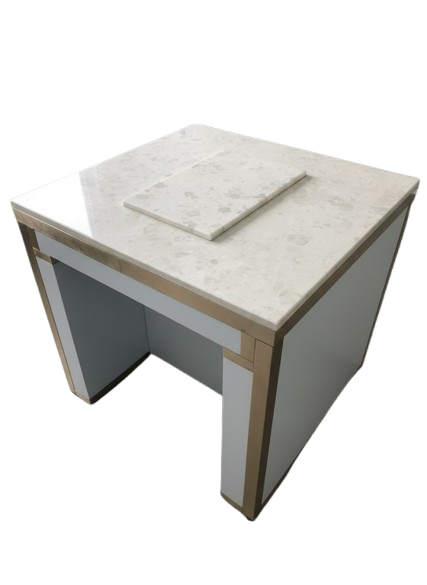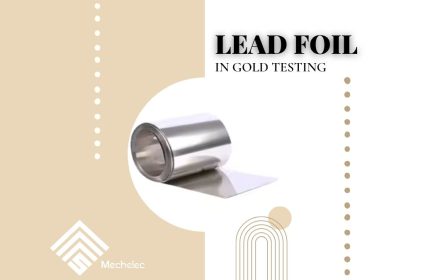In any laboratory, accuracy is everything. Whether it’s weighing precious metals, analysing chemical reactions, or conducting delicate research, even the slightest vibration can disrupt results. What many don’t realise is that everyday sources of vibration – footsteps, nearby machinery, or even air conditioning can compromise sensitive instruments.
That’s where anti-vibration tables come in. Often overlooked, these specialised workstations provide the stability laboratories need to achieve reliable, repeatable outcomes. In this article, we’ll explore why anti-vibration tables matter, how they work, and the key benefits they bring to precision-focused labs.

What Are Anti-Vibration Tables?
Anti-vibration tables are specialized laboratory workstations designed to minimize the impact of external vibrations on sensitive equipment. They typically combine a heavy, rigid tabletop with vibration-dampening materials or isolation systems built into the base. This setup absorbs shocks and prevents minor movements from transferring to delicate instruments placed on the surface.
In practice, anti-vibration tables act as a stable foundation for high-precision tools such as analytical balances, microscopes, spectrometers, and fire assay equipment. By reducing interference, they help laboratories achieve consistent, reliable results while protecting instruments from wear and tear caused by constant vibrations.
Why Precision Matters in Lab Work
In laboratory environments, even the tiniest disturbance can lead to inaccurate results. Precision isn’t just a buzzword. It is essential for experiments, measurements, and analyses that determine real-world outcomes.
Take fire assay for example: when measuring the gold or silver content in ores, a minor vibration can skew the results, leading to financial losses or incorrect conclusions. Similarly, weighing precious metals demands absolute stability, as even a fraction of a gram can make a difference. In microscopy and spectroscopy, vibrations can blur images or distort readings, compromising research quality.
Without vibration-free setups, labs risk inconsistent data, wasted materials, and unreliable results. Anti-vibration tables provide the foundation needed to maintain this precision, ensuring that sensitive instruments perform at their best every time.
How Anti-Vibration Tables Work
Anti-vibration tables achieve stability through careful structural design. Most tables combine a heavy, rigid tabletop with vibration-dampening materials and shock absorbers built into the base. The mass of the table helps resist movement, while damping materials absorb vibrations before they reach sensitive instruments. This combination ensures a stable, vibration-free workspace even in busy laboratory environments.
There are two main types of systems:
- Passive Systems – These use mechanical elements such as springs, pneumatic supports, or viscoelastic materials to absorb vibrations naturally. Passive tables are simple, reliable, and require minimal maintenance.
- Active Systems – These tables include sensors and actuators that detect vibrations and actively counteract them in real time. Active systems provide superior stability, especially in environments with high-frequency vibrations or sensitive instrumentation.
By understanding the mechanics behind anti-vibration tables, laboratories can choose the system that best matches their precision requirements and instrument sensitivity.
Applications in Different Labs
Anti-vibration tables are essential wherever precision and accuracy are critical. They are widely used across a variety of laboratory environments:
- Metallurgy and Fire Assay Labs: Ensures accurate measurement of precious metals like gold and silver during cupellation and weighing processes. Even slight vibrations can affect assay results, so a stable table is crucial.
- Pharmaceutical and Chemical Labs: Provides stability for analytical balances, chromatography instruments, and other sensitive testing equipment.
- Research and Academic Labs: Supports microscopes, spectrometers, and other instruments where vibration can blur images or distort readings.
- Quality Control Laboratories: Helps maintain consistent, repeatable measurements, essential for compliance with industry standards.
By isolating instruments from floor and environmental vibrations, anti-vibration tables improve the reliability of results and extend the lifespan of sensitive laboratory equipment.
Benefits of Using Anti-Vibration Tables
Investing in an anti-vibration table offers several key advantages for laboratories focused on precision and reliability:
- Improved Accuracy: Reduces measurement errors caused by vibrations, ensuring data and test results are reliable.
- Consistent Results: Provides a stable environment for repeatable experiments and analyses.
- Instrument Protection: Minimizes wear and tear on sensitive equipment, extending their lifespan.
- Compliance and Safety: Helps labs meet industry standards for precision and quality control.
- Time and Cost Efficiency: Reduces the need for repeated experiments and prevents material waste caused by inaccurate measurements.
By stabilising instruments, anti-vibration tables ensure laboratories can maintain high standards of precision and productivity, making them an essential part of modern lab infrastructure.
How to Choose the Right Anti-Vibration Table
Selecting the right anti-vibration table depends on the type of instruments you use and the level of precision required. Consider the following factors:
- Load Capacity: Ensure the table can support the weight of your equipment without compromising stability.
- Table Size: Match the surface area to your instruments and workspace layout for optimal convenience.
- Type of System:
- Passive: Suitable for standard lab equipment and environments with moderate vibrations.
- Active: Ideal for highly sensitive instruments or locations with frequent, high-frequency vibrations.
- Instrument Sensitivity: Highly precise balances, microscopes, or spectroscopy tools require superior vibration isolation.
- Environment: Consider floor vibrations, nearby machinery, and foot traffic that may affect stability.
By evaluating these factors, labs can select an anti-vibration table that maximises accuracy, protects instruments, and improves overall workflow.
Mechelec’s Passive Anti-Vibration Table for Balance
The Mechelec’s Passive Anti-Vibration Table is specially designed to provide maximum stability and precision for sensitive weighing applications. Built with a robust square frame and a massive granite top, this table effectively minimizes ground vibrations as well as disturbances caused by user activity during balance operation.
Key Features:
- Passive Vibration Control – Eliminates environmental and operational vibrations without the need for power.
- Heavy Granite Top – Provides a stable, solid platform to ensure precise and consistent weighing results.
- Stable Square Frame – Rigid construction reduces flex and movement.
- Adjustable Leveling Feet – Easy height adjustment for optimal balance setup.
- User Comfort – Designed for ergonomic use, ensuring accuracy and convenience during balance operations.
Applications: Ideal for analytical balances, microbalances, and other precision instruments used in laboratories handling tasks such as fire assay, weighing precious metals, pharmaceuticals, and research applications.
Dimensions: 770mm x 700mm x 800mm
Frequently Asked Questions (FAQs)
Not all labs require them, but any workspace with sensitive instruments—such as analytical balances, microscopes, or spectrometers—can benefit. Anti-vibration tables ensure accurate measurements and protect expensive equipment.
Passive tables use mechanical elements like springs, granite tops, and damping materials to reduce vibrations.
Active tables include sensors and actuators that detect and counteract vibrations in real time, providing superior stability for highly sensitive instruments.
Consider the weight of your instruments, their sensitivity, the type of environment, and the frequency of vibrations. Passive tables are suitable for standard lab balances, while active tables are ideal for extremely delicate equipment.
Maintenance is minimal for passive tables—primarily keeping surfaces clean and checking leveling feet. Active systems may require periodic calibration and inspection of sensors or actuators.
Yes. Anti-vibration tables can be added to almost any lab environment, providing stability without requiring extensive renovation.
Conclusion
Precision and accuracy are the backbone of every laboratory. Even minor vibrations can compromise sensitive measurements, waste materials, and affect research outcomes. Anti-vibration tables provide a stable foundation that protects your instruments, ensures reliable results, and improves workflow efficiency.
For laboratories handling fire assay, metallurgy, pharmaceuticals, or research applications, investing in the right anti-vibration table is essential for both accuracy and instrument longevity.
Explore Mechelec’s range of passive anti-vibration tables for balances and discover how our durable, stable, and ergonomically designed tables can enhance precision in your lab. For optimal precision, pair your anti-vibration table with our weighing pans and calibrated weights to ensure accurate and consistent measurements in every laboratory application.”
Contact us today to learn more or request a quote tailored to your lab’s needs.






